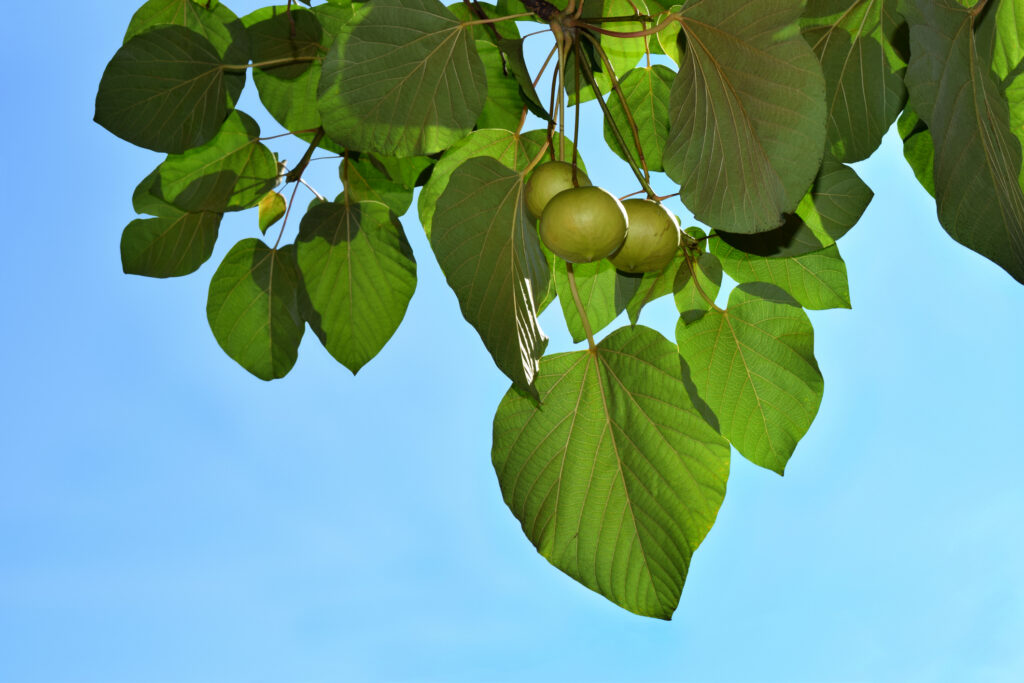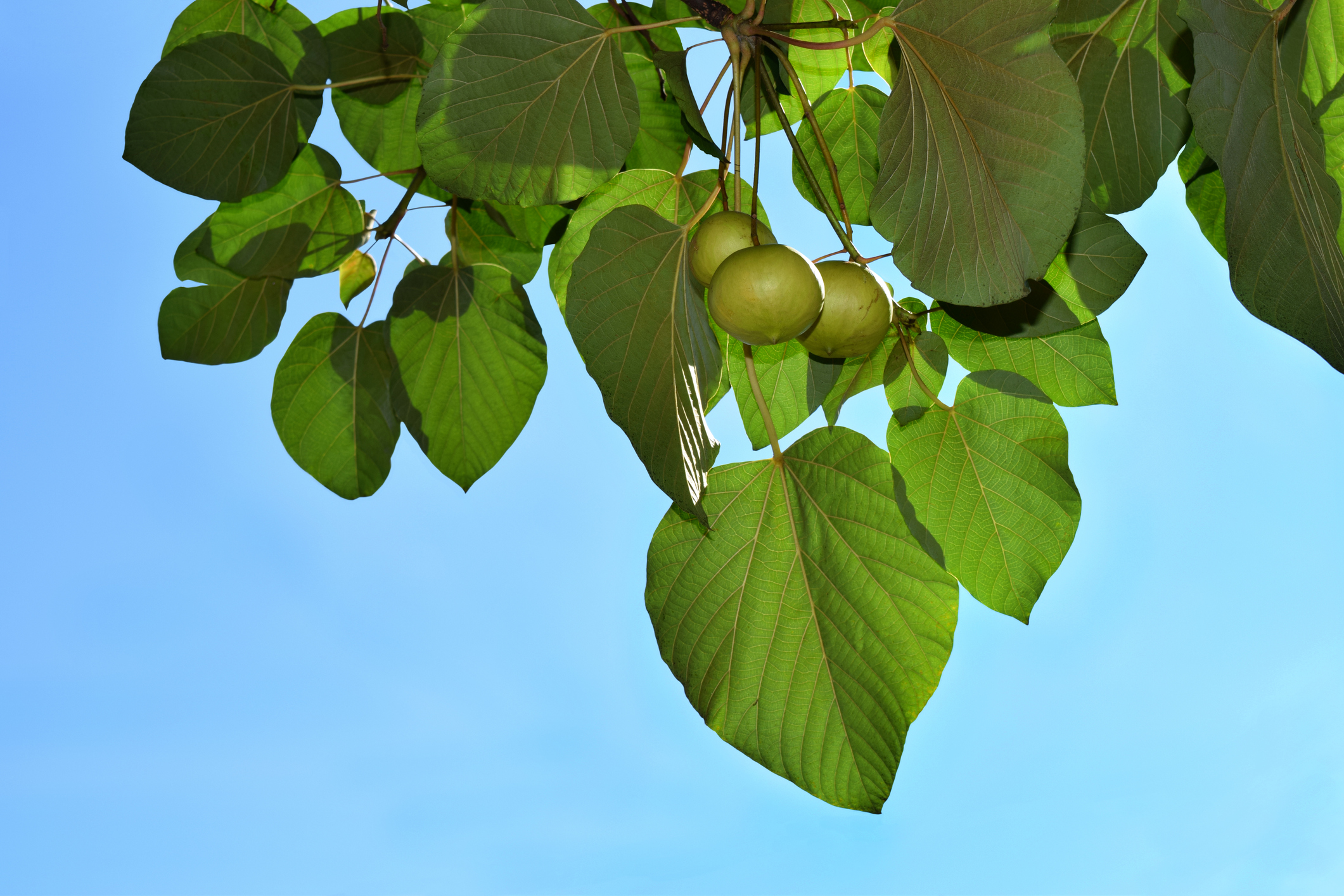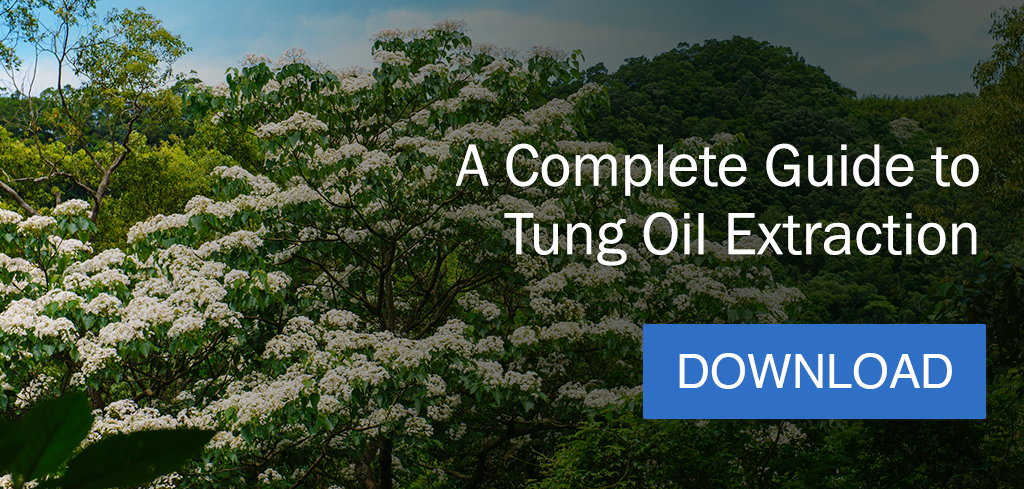
Unlike most oilseed crops that produce multiple byproducts from all parts of the plant, tung oil is the only product from the tung nut tree. It can’t be grown for food or feed, since all parts of this ancient Chinese tree contain toxins that make it poisonous to consume. Its sole purpose through the centuries has been for industrial tung oil extraction, as manufacturers capitalize on the oil’s quick-drying polymerization to waterproof wood, make linoleum, insulate phone cables, or seal nearly any surface with its plastic-like coating.
Also known as the China wood oil tree, the tung nut tree originates in China, where more than 80% of global production is still centered today. Since its heyday as a domestic crop in the 1930s and 1940s, when it was used to coat ammunition and waterproof ships during World War II, U.S. tung oil production has dwindled due to severe weather.
Emerging uses in electronics and biofuel production are boosting the global popularity of tung oil, along with its time-tested function as a wood finish and paint ingredient. This ancient oil is starting to see a resurgence around the world and as a domestic crop, thanks to a new cultivar that hopes to revive the U.S. tung oil extraction industry.
By understanding the challenges and opportunities that come with tung oil extraction, processors can join the tung revival and take advantage of this high-value specialty oil.
Growing tung groves
Tung trees require long, hot summers with abundant rainfall—making them an ideal crop for subtropical climates like those in western China, South America, and the U.S. Gulf Coast. In their natural habitat, tung trees grow along rocky hillsides where good air circulation and sloped water drainage help protect the crops from spring frosts.
By the 1940s, more than 100,000 acres of tung trees covered the Gulf states from Texas to Florida. However, a series of late winter freezes in the 60s contributed to the downfall of these groves. Then Hurricane Camille dealt the final blow in 1969, killing at least half of the remaining acreage as America turned toward cheaper oil imports from South America.
However, U.S. tung production is starting to see a recent resurgence, thanks to the development of a late-flowering cultivar designed to dodge late-winter frost and freeze damage. Thousands of these new-and-improved late-blooming tung trees have been planted in Gulf states by farmers hoping to reignite the domestic tung oil industry.
Processing tung nuts
Tung trees start bearing fruit after a couple of years, reach peak productivity after ten years, and produce fruit until they’re about 30. During that time, they can grow up to 40 feet tall, although most only reach about 15-25 feet.
Sometimes grown for their showy appearance, tung trees bloom in spring with striped, pink flowers. These flowers mature into clusters of round, palm-sized, green fruits that contain four or five seeds called tung nuts—although they’re technically classified as drupes, similar to peaches. Ripe fruits fall from the trees around October, and they’re left there to dry for several weeks until the dried husks can be peeled off to remove the seeds inside.
All parts of the tung tree—particularly the seeds—contain toxins called saponins. Direct contact with the leaves or the milky sap from the bark may cause a poison ivy-like rash. Saponins can be poisonous if ingested, although the human body poorly absorbs them, so most saponins pass through without serious harm.
Despite their toxicity, preparing tung nuts for oil extraction is a similar process to other types of oilseeds. The pretreatment steps include:
- Cleaning the seeds to remove plant material and debris requires extra caution with tung nuts because of their toxicity.
- Cracking the seeds in a roller mill to break large tung nuts into smaller pieces for easier processing.
- Cooking the ground nuts at 190 degrees for 10 to 12 minutes, then drying at about 240 degrees to reduce the moisture level to 3%, rupturing the cells and liquefying the oil.
Tung oil extraction
Tung oil was traditionally extracted using solvents like hexane to separate the oil from the rest of the kernel chemically. Solvent-extracted oil must undergo additional processing to remove the residual hexane, which is highly toxic. Although solvent extraction is efficient, recovering all but 1% of the oil from the tung nut, it is also expensive and potentially dangerous.
Driven by the demand for chemical-free processing, mechanical pressing is gaining popularity for tung oil extraction. This method uses an oil expeller or mechanical screw press to physically squeeze out the oil, which drains through the screw press while the solid seed material, or meal, is discharged from the other end.
Due to tung’s tough exterior and relatively high oil content of 40%, extracting all the oil with a single press can be difficult. Instead of pressing the material several times, using multiple presses, or employing chemicals to separate the fat from the solid seed, the Anderson Super Duo™ Series Expeller® uses a unique dual-press design to crush the seeds twice in a single pass. This eliminates the need for multiple presses or harmful chemicals, which can add extra costs and environmental concerns. Using energy-efficient mechanical pressure, the Super Duo can process capacities up to 30 tons daily, leaving only 5-7% residual oil behind.
Tons of tung oil opportunities
Tung oil extraction holds potential for processors who can effectively squeeze profits from this valuable nut. The priciest seed oil on the market, tung oil averages around $4,000 a ton—compared to $1,000/ton for soybean oil and $1,300/ton for canola. The global tung oil market is forecast to grow from its estimated 2022 value of $223 million to $260 million in the next five years—presenting a lucrative opportunity for producers and processors who can meet the growing demand.
With decades of experience processing tough specialty nuts like tung, Anderson International provides the seasoned expertise and specialized equipment to help processors tap into the opportunities this crop offers.
Download our Complete Guide to Tung Oil Extraction to get started.

